Table of contents
Wholemeal spelt flour ( organic ) is the flour made from the whole spelt grain ( Triticum aestivum L. ssp. spelta or Triticum aestivum ssp. spelta L.). As a wholemeal flour, it has a relatively high proportion of nutrients and minerals compared to other, lighter types of flour.
Wholemeal spelt flour used in the kitchen:
Wholemeal spelt flour is used in the kitchen primarily for baking, which requires a bit of skill: Wholemeal products contain more shells (bran) than light flours, which is why wholemeal dough needs a bit more liquid. 1 When processing, it is recommended to knead the wholemeal dough briefly and then let it rest overnight (or at least for a while) before further processing. The dough is considered kneaded when it comes away from the edge of the bowl and the surface appears a bit lighter and less moist than the inside of the dough. 2,3
Wholemeal flour is ideal for use in pizza dough, bread or baguettes. Sweet baked goods, such as muffins, can also be made from organic wholemeal spelt flour. For delicate baked goods, however, you should opt for refined flour (light spelt flour). Baked goods made from wholemeal flour are generally a little firmer than products made from lighter flour.
Spelt doughs generally contain more gluten than wheat doughs, as spelt has a higher protein and gluten content. 24 The relatively higher proportion of gliadin makes the dough more elastic, 25 but it is less dimensionally stable (less glutenin) 22 and less voluminous. It is also possible to mix wholemeal spelt flour with various other types of flour. Sourdoughs, pre-doughs or soaked doughs, etc. are particularly suitable for baking with wholemeal spelt flour . 4
In addition to making wholemeal spelt bread, wholemeal spelt flour is also used to make wholemeal spelt pasta.
Can you replace spelt flour with wholemeal spelt flour? In principle, you can replace wheat flour , light spelt flour or another flour with wholemeal spelt flour in any recipe. However, depending on the end product, different types of flour are better. In addition, darker flours usually require more liquid than light flour. If you want to replace white flour with wholemeal spelt flour, you should always add 10-20% (or even 25% 1 ) more water or plant milk. 5,6
Vegan recipe for a wholemeal spelt bread:
Ingredients: 1 kg wholemeal spelt flour (organic), 900 ml water , 2 cubes of yeast , 350 g sunflower seeds , 2-4 teaspoons of salt (less is healthier), 5 tablespoons of balsamic vinegar , 1 handful of oat flakes .
Preparation: Mix and knead all ingredients except the oat flakes well. Put the dough in a loaf pan (35 cm) and then sprinkle the oat flakes on top. Bake the vegan wholemeal spelt bread for 60 minutes at 200 °C top and bottom heat without preheating the oven.
Vegan recipe for an apple cake with wholemeal spelt flour:
Ingredients: 275 g wholemeal spelt flour (organic), 120 g sugar , 350 ml water or plant milk (e.g. oat milk ), 100 ml rapeseed oil , 1 packet of baking powder , ½ teaspoon cinnamon , 75 g plant-based yoghurt (vegan), 2 apples , 3 tablespoons maple syrup .
Preparation: Mix all ingredients (except apples) in a large bowl. Then wash, core and dice the apples and mix them into the mixture. Put the dough in a baking tin (20 cm, box) and bake at 180 °C for 40 to 50 minutes. Depending on your taste, you can spread some maple syrup on the vegan spelt cake after baking.
Vegan recipes with wholemeal spelt flour can be found under the note: " Recipes that have the most of this ingredient ".
| Not only vegans or vegetarians should read this: Vegans often eat unhealthily. Avoidable nutritional mistakes . |
Shopping - where to buy wholemeal spelt flour?
Wholemeal spelt flour can be found all year round at major retailers such as Coop , Migros , Denner , Volg , Spar , Aldi , Lidl , Rewe , Edeka and Hofer , some of which are also organically produced. Online shops, health food stores, organic shops and organic supermarkets ( Alnatura , Denn's Biomarkt ) also have spelt flour (organic) in their range (including organic wholemeal spelt flour).
Ancient spelt flour (ancient spelt flour) is milled from old spelt varieties without any cross-breeding with wheat. 21,23 These flours can be found in stores under the following names: organic ancient spelt wholemeal flour, ancient spelt wholemeal flour, ancient spelt wholemeal flour, etc. You can find out more about ancient grains and the protected Swiss brand UrDinkel under the ingredient spelt (spelt grains) .
You should make sure that the packaging really says 'whole grain'. This can only be declared as such if it is whole grain. You often find names like 'fitness bread', 'multigrain bread' or similar, but these conceal the fact that it does not actually contain whole grain. A dark color does not automatically mean that the contents are healthier. In the bread and baking industry, other additives are often used to color the product (e.g. barley malt ).
If you buy whole spelt grains, you can let them trickle through your fingers to check their quality. They should be dry and firm and have a smooth surface. Some farm shops or health food stores will even grind wholemeal flour fresh on request. 7 Flours declared as organic must comply with the rules of organic farming. Their grains are grown without the use of pesticides and synthetic fertilizers.
Wholemeal spelt flour is vegan and raw, so it is actually raw food. However, it is possible that the raw food quality of the flour is lost due to higher temperatures during the milling process. 19
Making your own spelt flour (whole grain):
You can also make your own whole grain spelt flour. First of all, you need fresh spelt grains or ancient spelt grains. The whole grain must always be completely dry for grinding. If you have a grain mill, put the grains in the mill, which will grind them according to the setting. If you don't have a mill, a powerful mixer, a grinding attachment or a Thermomix are suitable for making your own flour (whole grain). However, the heat generated could cause ingredients to be lost. With such devices, you chop and heat the grain rather than actually grinding it. 7,8 When processing in a mill, you have the advantage of being able to adjust the degree of grinding. This means you can easily choose between very fine flour or coarse meal, depending on your needs. 9 Homemade spelt flour should be left to rest for a while before use in order to achieve better baking properties. 2
Storage:
Like all types of flour, wholemeal spelt flour should be stored in a dark, cool and dry place. Light causes vitamins to break down and moisture causes the flour to age more quickly. Storage in the refrigerator is not recommended, however. Wholemeal products in particular have a shorter lifespan than light flours due to their germ content. If stored for a longer period, the quality and baking properties of the flour suffer. Wholemeal flours can lose quality after three to four weeks and last for a maximum of six to eight weeks. The shelf life always depends on the degree of milling. The higher the degree of milling, the faster the flour spoils. 10 Due to the high protein and fat content of the germ, which is still contained in wholemeal flour, it can taste rancid after a few months. 11 The shelf life can sometimes be extended during production by adding ascorbic acid. 12
Wholemeal spelt flour ingredients - nutritional values - calories:
Wholemeal spelt flour (vegan) is particularly characterized by its high fiber content. Per 100 g, the flour provides 330 kcal and 10 g of fiber, which covers 16.5% and 40% of the daily requirement respectively. The protein content in wholemeal spelt flour is 14 g/100g (28% of the daily requirement) and the total carbohydrate content is 70 g/100g. 13
Essential nutrients, amino acids and vitamins are also found in greater quantities in wholemeal spelt flour. For example, 3.3 mg of manganese are contained in 100 g of wholemeal spelt flour (165% of the daily requirement), while much smaller amounts are generally found in light (white) flours. Light spelt flour contains 1.2 mg/100g of manganese. More manganese is found in wholemeal wheat flour (4.1 mg/100g) or in wheat bran (12 mg/100g). 13
The iron content in wholemeal spelt flour is also quite high at 9.7 mg/100g. Spices contain more iron, e.g. dried basil (90 mg/100g) or dried thyme , and wheat bran has a similar amount (11 mg/100g). Wholemeal wheat flour, on the other hand, has a smaller iron content of 3.6 mg/100g. 13
There is also quite a lot of tryptophan . At 0.16 g/100g, the amount is comparable to that of whole wheat flour and covers 65% of the daily requirement. More tryptophan can be found in lupin flour (0.3 g/100g). Whole corn flour contains less tryptophan: 0.06 g/100g. 13
Among the vitamins, thiamine (vitamin B 1 ) is worth mentioning. With 0.5 mg/100g, wholemeal spelt flour covers 45% of the daily requirement. Wholemeal wheat flour is also comparable. The leaders in terms of thiamine content are yeast flakes (41 mg/100g) and wheat germ is also quite high at 1.9 mg/100g. Less thiamine is contained in white rice flour (0.14 mg/100g). 13
Regarding nutrient content, the differences to whole wheat flour are small (with the exception of the iron content, see above).
The complete ingredients of wholemeal spelt flour, the coverage of the daily requirement and comparison values with other ingredients can be found in our nutrient tables. In the article Nutrients explained you will get a detailed insight into the topic.
Wholemeal spelt flour: Health aspects - Effects
Is wholemeal spelt flour healthy? Since wholemeal flour is made from the whole grain (raw, including the shell), it contains more fiber. This fiber has a positive effect on digestion, leads to a long-lasting feeling of satiety and causes blood sugar levels to rise only slowly. 3
Which is healthier, spelt flour or wholemeal spelt flour? When it comes to health, one cannot generalize, but wholemeal flour contains more minerals than refined flour, which is made from only a portion of the grain. 6 Eating wholemeal appears to reduce the risk of coronary heart disease, cardiovascular disease and cancer, as well as overall mortality. It also has a protective effect against respiratory diseases, infectious diseases, diabetes, non-cardiovascular diseases and other diseases that are not related to cancer. 14
Dangers - intolerances - side effects:
Like many other types of grain, spelt contains gluten - even a little more than wheat. 22,24 However, the exact structure of the proteins differs. Wheat contains omega-5 gliadin (ω-gliadin), which is usually responsible for the intolerances. Since ω-gliadin is largely missing in spelt (especially in old spelt varieties or original spelt), 21,23 people with a wheat intolerance can sometimes resort to spelt products. 15,16
Spelt is not suitable for people who suffer from gluten intolerance, gluten sensitivity or celiac disease. Possible symptoms of celiac disease include gastrointestinal complaints and symptoms such as iron deficiency, weight loss, loss of appetite or osteoporosis. 17 You can find out more about gluten and celiac disease under the ingredient wheat gluten (seitan, organic?) , and on the topic of "spelt or wheat?" under spelt .
Folk medicine - natural healing:
In folk medicine, spelt is generally said to have positive properties. Hildegard von Bingen in particular recommends ancient spelt and products made from it, such as spelt flakes, spelt bread or wholemeal spelt flour.
Occurrence - Origin:
The origin of spelt is not clearly established. A distinction is usually made between an Asian and a European origin. Wholemeal spelt flour (vegan) can be found in almost every supermarket in Europe - in many other countries, such as the USA, this is not a given.
For more details on the origin and occurrence, cultivation and harvest of the resistant grain and the ecological background, see the article Spelt grains .
Possibility of confusion with spelt flour (wholemeal):
Wholemeal spelt flour should be distinguished from the many other types of flour (wheat, rye, oats, barley, etc.). Darker flours in particular carry the risk of being confused with wholemeal spelt flour. There are also lighter spelt flours, starting with type 630, through 812 and up to 1050.
The type number indicates the nutrient and mineral content and varies from country to country. In principle, however, the higher the type, the more nutrients are contained, which can also be seen in the darker color of the flour. This is because, depending on the type, the shells are partially or completely removed before grinding. Wholemeal flour, however, is never classified because it always contains the whole grain. Here, the mineral content fluctuates naturally. 6,11
What is the difference between spelt flour and wholemeal spelt flour? Spelt flour type 1050 is the darkest flour available before wholemeal flour and contains more nutrients and minerals than types 630 and 812 of spelt flour, but less than wholemeal flour.
What is the difference between wholemeal groats and wholemeal flour? The difference between flour and groats is the degree of grinding. Flour is much finer than groats.
Industrial production of wholemeal spelt flour:
Spelt ( Triticum aestivum ssp. spelta or Triticum aestivum subsp. spelta ) is a hulled grain, similar to barley , oats , millet , einkorn, emmer or rice . The inedible husks are removed after harvesting using special hulling mills (rolling mills). When producing wholemeal flour, the entire grain (whole grain) is processed after cleaning, while with white flour the outer layers (husks and aleurone layer) and the germ are removed before further processing. 3
There are two different methods for industrially produced wholemeal flour: one is to process the entire grain directly into flour, another is to separate the grain from the germ and husk, process them separately and then mix them again. 18 Since, according to the law, a flour can only be called wholemeal flour if it contains at least 90% of the grain components, some sources indicate that the germ is sometimes no longer included in the flour mixture. 9,19 Due to its high fat content, it affects the shelf life of the flour. However, the germ contains healthy oils, vitamins, unsaturated fatty acids and phosphatides, which are missing from the resulting 'wholemeal flour' in this case. In industrial production, enzymes are sometimes used, which later make the spelt dough more airy. It is then easier to work with and gets a crispy crust. 12
General information:
The lower the flour type (type number), the easier it is to process. Higher types require more skill, especially with wholemeal flour (without a type number). The higher the proportion of husks, the less the flour binds and sticks. The protein content, which is known as gluten, is therefore also considered a quality feature of the flour, 11 especially in industry. The particle fineness and shape of the flour are relevant for a good baking result with wholemeal spelt flour. 2 There are also attempts to add green spelt, i.e. spelt grains harvested when half ripe, to wholemeal spelt baked goods, as they have a higher nutrient content. 20
Alternative names:
Instead of the term wholemeal spelt flour (wholemeal spelt flour), you can also find whole spelt flour. Ancient spelt flour (ancient spelt flour) refers to flour made from old types of spelt (ancient spelt, ancient spelt).
Incorrect spellings such as wholemeal spelt flour, wholemeal spelt flour, wholemeal spelt flour, wholemeal spelt flour, wholemeal spelt flour, wholemeal spelt flour, wholemeal spelt flour or wholemeal spelt flour or ancient wholemeal spelt flour are in circulation. The double term spelta flour is also used for spelt flour.
There are several answers to the question "Wholemeal spelt flour in English?" : In English, people talk about whole spelt flour or wholemeal spelt flour. Spelled flour or spelt flour refers to spelt flour in general.
Literature - Sources:

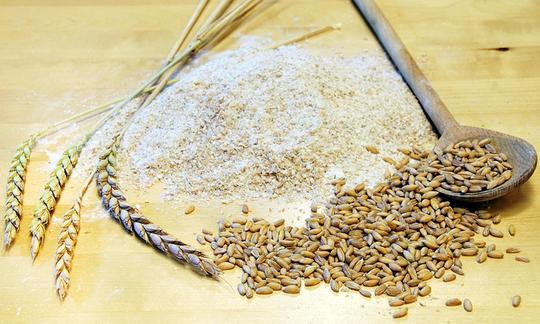

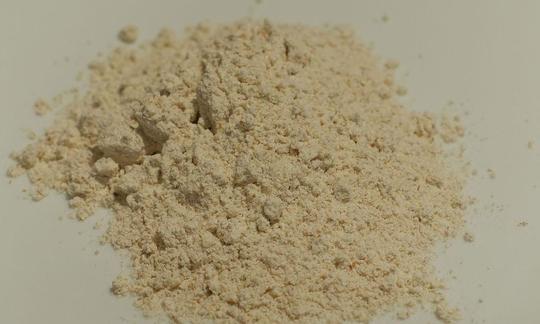

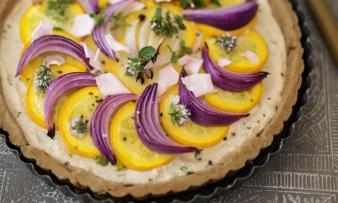
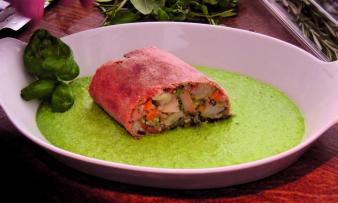
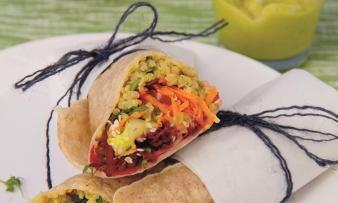





Comments